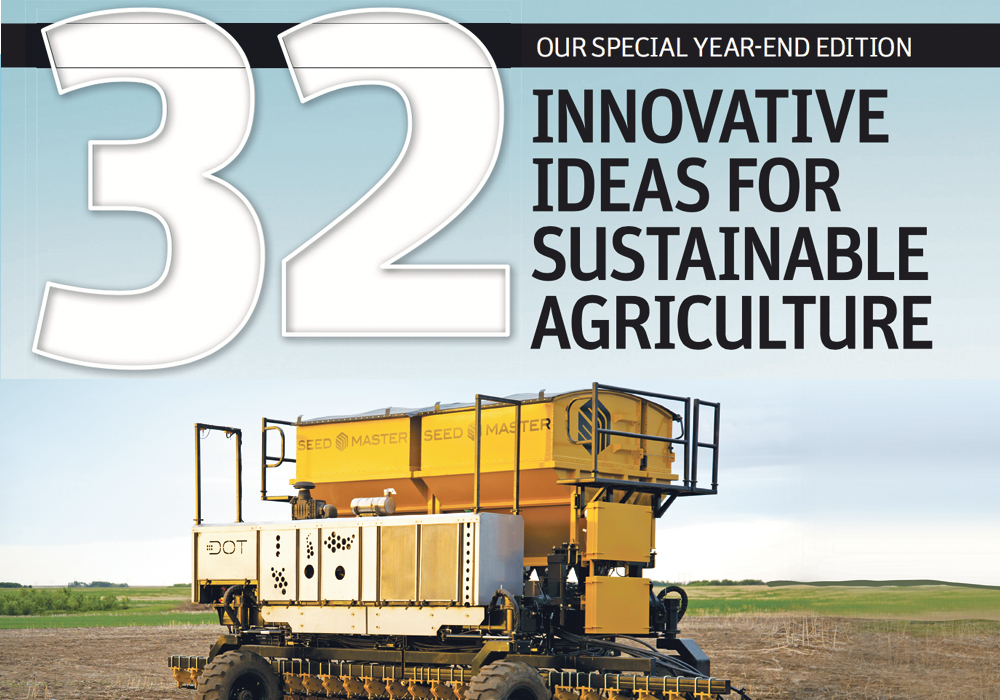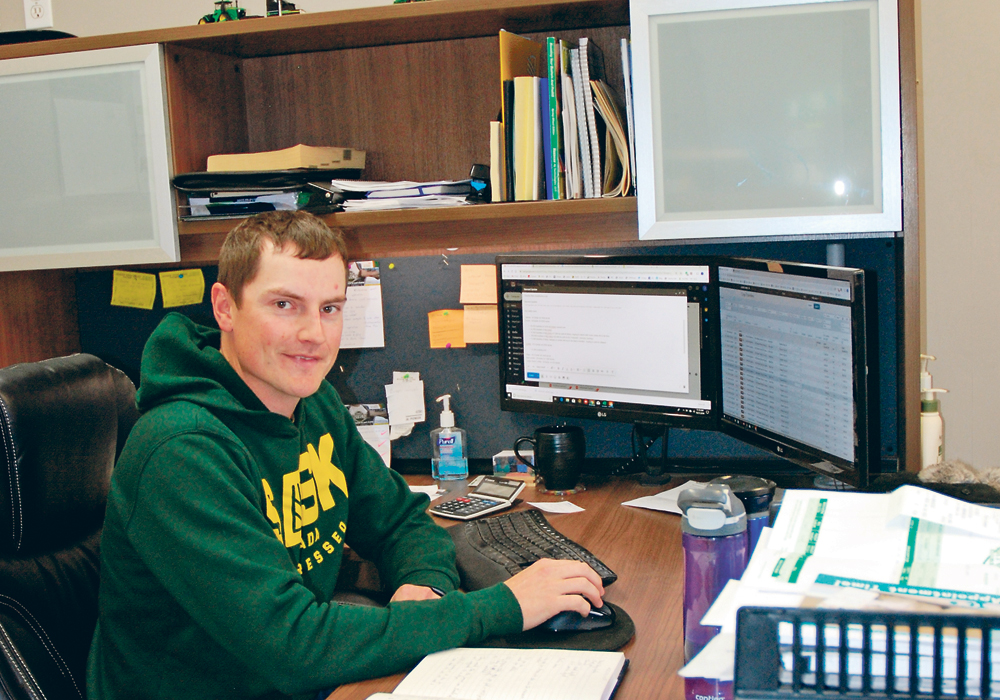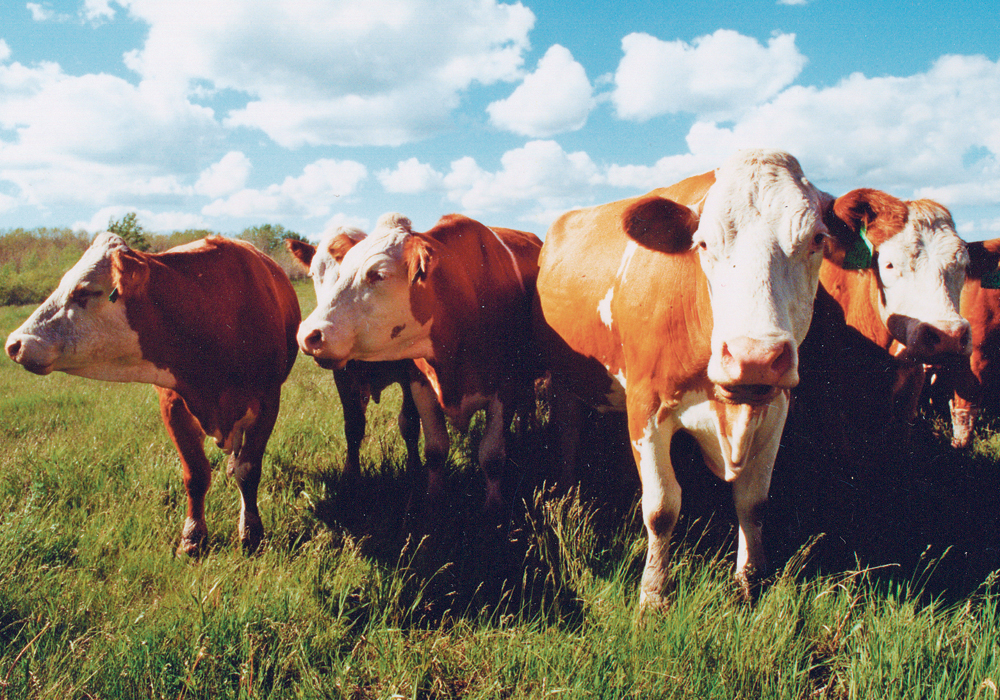REGINA — Keeping up with technology could be the biggest challenge facing purebred cattle breeders.
Genomically enhanced expected progeny differences, genetic databases and new algorithms are complicated and hard to understand but all are necessary to improve cattle and make better selection decisions, said Bob Weaber, cow-calf extension scientist at Kansas State University.
“There is getting to be a wider gap in knowledge between the seedstock producer, particularly the nucleus seedstock producers and the average commercial cattleman than there has ever been,” he said at the Simmental Federation of Americas conference held in Regina Nov. 21.
Read Also

Agritechnica Day 2: The future of tractor power, building quicker crop apps and large farms and tech
Agritechnica Day 2: The future of tractor power, building quicker crop apps with Syngenta and large farms and tech
“The complexities of explaining what we do to our commercial customers is getting more difficult and probably more important,” he said.
“If we don’t keep up with technology and progress in terms of genetic improvement, what happens to the status quo? Status quo is not standing still but actually backing up and the longer you wait to adopt or change or implement, the further behind you are,” he said.
Other stories in The 2017 Innovation Issue:
- New genetic tools offer way to restore cattle vigour
- Biotech companies prospecting for microscopic gold mines
- Bee buzzes critical to calculating crop pollination
- Fungus could aid plant growth, reclaim oil sites
- Cracking the megapest genetic code
- Genetic mapping vs. genome sequencing
- French robot prowls the chicken coop so you don’t have to
- New laser technology proves successful for B.C. orchard
- High-tech deterrent devices protect crops from … intruding elephants?
- Diamondback moths focus of Cornell study
- VIDEO: Print your own parts?
- Bees may be serving up humanity’s next big food … and it isn’t honey
- Big doubts about big data
- The little plane that did
- Soil mapping soon to be more usable
- Managing fields could soon move to plant level
- GM pollen: it gets around
- Autonomous vehicles not on the radar for most farmers
- Farm wi-fi connectivity opens new world of possibilities
- Nanotechnology to alter animal health, food systems
- As big data comes to the farm, are policy makers keeping up?
- Farmers not rushing to grab digital tools: survey
- Connecting the DOTs
- Hands-free field test
- Researcher understands farmer doubts about hands-free farming
- The trouble with telematics
- Sensor sensibility
- The discovery that could shake up the beer industry
- Grow your own clothes
- Blockchain technology offers food safety, traceability and more
- Supercluster makes big innovation pitch
- Quicker, cheaper biofuel production in the works
- Alternatives to livestock antibiotics are difficult to assess
- A revolution is coming
Commercial producers need to be convinced of the value of the new science, he said.
Producers can improve commercial herds by knowing the sires of calves and their ancestries, but they have to see value in it, said geneticist John Crowley, based at the University of Alberta.
Crowley works with the Canadian Beef Breeds Council, which represents 16 cattle breeds.
“They don’t see the merit in spending $20 on doing a parentage test on a commercial animal when his profit margin may only be $20 to$30 depending on the year,” Crowley said.
Knowing the breed composition at the commercial level helps determine the level of hybrid vigour.
Commercial producers may think they know what breeds are present in their herd, but DNA does not lie.
DNA from each parent is not transferred evenly and desired traits can sometimes disappear or diminish.
“We have known for a long time in using genomics that every relationship between grandparents and progeny differ a lot from what you expect it to be,” Crowley said.
The rate seedstock producers are adopting these new genetic technologies also varies.
Not everyone is comfortable in using EPD information or selection indexes, said Weaber.
The concept of genomically enhanced EPDs where genomic information is blended with traditional EPDS is fast-moving technology and can be complicated.
Genomic information adds to the knowledge collected on individuals sooner rather than measuring merit later in life.
“The definition of the tool hasn’t changed; the implementation hasn’t changed, but the data that goes into it is changing rapidly,” said Weaber.
When following EPDs, there is an expectation of what the average progeny should look like. The progeny is never average so more information is needed to develop the true genetic merit of an individual and better predict what the offspring might do.
When genomes were first sequenced, there was high expectations the technology was going to work out where specific genes might be connected to valuable traits. Now researchers know there are interactions among thousands of genes that can affect a single trait.
However, the technology continues to improve and significant changes are expected over the next four or five years in the seedstock business.
“If we don’t figure out how to make better critters, then we are asleep at the wheel,” Weaber said.
Genomic data accumulation offers a chance to better document common traits for factors such as fertility, longevity, feed efficiency and beef quality.
A further advantage is selecting younger animals of high genetic merit.
Using standard tests, it takes a long time to collect information on bulls. A DNA test could speed that up.
“Increasing accuracy early in an animal’s life shortens the generation interval on the bull side,” he said.
“If you are a nucleus beef breeder and you do not adopt the technology, you will not be able to keep up.”
Those selling bulls may argue they are not going to get paid enough to cover the cost of the testing and results. It is going to come down to the progressive and informed commercial producers. They understand the value of reducing error in decision making, said Weaber.
Besides tracking the bulls, more information is needed on cows.
A DNA test could provide a better prediction of the cow’s potential through the genotype than lifetime production records.
Selection of replacement heifers could be also easier if they were genotyped before they were put into breeding programs. Producers could also make more informed decisions about which bulls to use.
Traditional EPDs versus genomically enhanced EPDs can improve heifer selection by about 50 percent by using more precise information.
“If I can put a group of heifers together where I know their genetic potential when they are weaned, I should do that,” said Weaber.
The dairy industry is already doing this and since 2009, it has quadrupled genetic change with higher fertility, lower somatic cell counts, calving ease, conformation and a longer productive life.
“A gap is growing between those who adopted the technology and those who did not in the dairy industry,” he said.
















